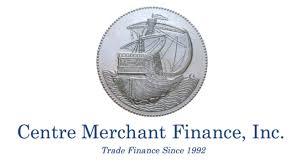Edited, memorised or added to reading queue
on 22-Jan-2018 (Mon)
Do you want BuboFlash to help you learning these things? Click here to log in or create user.
Flashcard 1425700162828
| status | not learned | measured difficulty | 37% [default] | last interval [days] | |||
|---|---|---|---|---|---|---|---|
| repetition number in this series | 0 | memorised on | scheduled repetition | ||||
| scheduled repetition interval | last repetition or drill |
Parent (intermediate) annotation
Open itSupply is the willingness of sellers to offer a given quantity of a good or service for a given price
Original toplevel document
3. BASIC PRINCIPLES AND CONCEPTS#13; In this reading, we will explore a model of household behavior that yields the consumer demand curve. Demand , in economics, is the willingness and ability of consumers to purchase a given amount of a good or service at a given price. <span>Supply is the willingness of sellers to offer a given quantity of a good or service for a given price. Later, study on the theory of the firm will yield the supply curve. The demand and supply model is useful in explaining how price and quantity traded are determined and ho
Flashcard 1438270491916
| status | not learned | measured difficulty | 37% [default] | last interval [days] | |||
|---|---|---|---|---|---|---|---|
| repetition number in this series | 0 | memorised on | scheduled repetition | ||||
| scheduled repetition interval | last repetition or drill |
Parent (intermediate) annotation
Open itd>Accounting profits only measure the return on the invested capital. Accounting income calculations reflect non-cash items and ignore the time value of money. They are important for some purposes, but for capital budgeting, cash flows are what are relevant. Economic income is an investment's after-tax cash flow plus the change in the market value. Financing costs are ignored in computing economic income. &
Original toplevel document
Subject 2. Basic Principles of Capital BudgetingCapital budgeting decisions are based on incremental after-tax cash flows discounted at the opportunity cost of capital. Assumptions of capital budgeting are: Capital budgeting decisions must be based on cash flows, not accounting income. Accounting profits only measure the return on the invested capital. Accounting income calculations reflect non-cash items and ignore the time value of money. They are important for some purposes, but for capital budgeting, cash flows are what are relevant. Economic income is an investment's after-tax cash flow plus the change in the market value. Financing costs are ignored in computing economic income. Cash flow timing is critical because money is worth more the sooner you get it. Also, firms must have adequate cash flow to meet maturing obligations. The opportunity cost should be charged against a project. Remember that just because something is on hand does not mean it's free. See below for the definition of opportunity cost. Expected future cash flows must be measured on an after-tax basis. The firm's wealth depends on its usable after-tax funds. Ignore how the project is financed. Interest payments should not be included in the estimated cash flows since the effects of debt financing are reflected in the cost of capital used to discount the cash flows. The existence of a project depends on business factors, not financing. Important capital budgeting concepts: A sunk cost is a cash outlay that has already been incurred and which
Flashcard 1438509829388
| status | not learned | measured difficulty | 37% [default] | last interval [days] | |||
|---|---|---|---|---|---|---|---|
| repetition number in this series | 0 | memorised on | scheduled repetition | ||||
| scheduled repetition interval | last repetition or drill |
Parent (intermediate) annotation
Open itties create costs for other parts of the firm. For example, if the bookstore is considering opening a branch two blocks away, some customers who buy books at the old store will switch to the new branch. The customers lost by the old store are <span>a negative externality. The primary type of negative externality is cannibalization, which occurs when the introduction of a new product causes sales of existing products to decline. 
Original toplevel document
Subject 2. Basic Principles of Capital Budgetingd in the estimated cash flows since the effects of debt financing are reflected in the cost of capital used to discount the cash flows. The existence of a project depends on business factors, not financing. <span>Important capital budgeting concepts: A sunk cost is a cash outlay that has already been incurred and which cannot be recovered regardless of whether a project is accepted or rejected. Since sunk costs are not increment costs, they should not be included in the capital budgeting analysis. For example, a small bookstore is considering opening a coffee shop within its store, which will generate an annual net cash outflow of $10,000 from selling coffee. That is, the coffee shop will always be losing money. In the previous year, the bookstore spent $5,000 to hire a consultant to perform an analysis. This $5,000 consulting fee is a sunk cost; whether the coffee shop is opened or not, the $5,000 is spent. Incremental cash flow is the net cash flow attributable to an investment project. It represents the change in the firm's total cash flow that occurs as a direct result of accepting the project. Forget sunk costs. Subtract opportunity costs. Consider side effects on other parts of the firm: externalities and cannibalization. Recognize the investment and recovery of net working capital. Opportunity cost is the return on the best alternative use of an asset or the highest return that will not be earned if funds are invested in a particular project. For example, to continue with the bookstore example, the space to be occupied by the coffee shop is an opportunity cost - it could be used to sell books and generate a $5,000 annual net cash inflow. Externalities are the effects of a project on cash flows in other parts of a firm. Although they are difficult to quantify, they should be considered. Externalities can be either positive or negative: Positive externalities create benefits for other parts of the firm. For example, the coffee shop may generate some additional customers for the bookstore (who otherwise may not buy books there). Future cash flows generated by positive externalities occur with the project and do not occur without the project, so they are incremental. Negative externalities create costs for other parts of the firm. For example, if the bookstore is considering opening a branch two blocks away, some customers who buy books at the old store will switch to the new branch. The customers lost by the old store are a negative externality. The primary type of negative externality is cannibalization, which occurs when the introduction of a new product causes sales of existing products to decline. Future cash flows represented by negative externalities occur regardless of the project, so they are non-incremental. Such cash flows represent a transfer from existing projects to new projects, and thus should be subtracted from the new projects' cash flows. Conventional versus non-conventional cash flows. A conventional cash flow pattern is one with an initial outflow followed by a series of inflows. In a non-conventional cash flow pattern, the initial outflow can be followed by inflows and/or outflows. Some project interactions: Indepe
Flashcard 1633232489740
| status | not learned | measured difficulty | 37% [default] | last interval [days] | |||
|---|---|---|---|---|---|---|---|
| repetition number in this series | 0 | memorised on | scheduled repetition | ||||
| scheduled repetition interval | last repetition or drill |
Subject 4. Different Yield Measures of a U.S. Treasury Bill
se price, not face value. It is not an annualized yield. The effective annual yield is the annualized HPY on the basis of a 365-day year. It incorporates the effect of compounding interest. <span>Money market yield (also known as CD equivalent yield) is the annualized HPY on the basis of a 360-day year using simple interest. Example An investor buys a $1,000 face-value T-bill due
Flashcard 1645860228364
| status | not learned | measured difficulty | 37% [default] | last interval [days] | |||
|---|---|---|---|---|---|---|---|
| repetition number in this series | 0 | memorised on | scheduled repetition | ||||
| scheduled repetition interval | last repetition or drill |
Open it
According to Chebyshev’s inequality, for any distribution with finite variance , the proportion of the observations within k standard deviations of the arithmetic mean is at least 1 − 1/k 2 for all k > 1.
Flashcard 1664685575436
| status | not learned | measured difficulty | 37% [default] | last interval [days] | |||
|---|---|---|---|---|---|---|---|
| repetition number in this series | 0 | memorised on | scheduled repetition | ||||
| scheduled repetition interval | last repetition or drill |
Parent (intermediate) annotation
Open itLook out for the words "given that" or "you are told that," which will help you know that the probability is conditional. In the absence of such information, the probability will be unconditional.
Original toplevel document
Subject 2. Unconditional, Conditional, and Joint Probabilitiesoil price, P(B), is 0.4. The probability of an increase in airfare given an increase in oil price, P(A|B), is 0.3. The joint probability of an increase in both oil price and airfare, P(AB), is 0.3 x 0.4 = 0.12. Hint: <span>Look out for the words "given that" or "you are told that," which will help you know that the probability is conditional. In the absence of such information, the probability will be unconditional. The letter after the | is the event that we know has definitely occurred, whereas the letter before the | is the event whose probability we are trying to calculate. <span>
Flashcard 1732440624396
| status | not learned | measured difficulty | 37% [default] | last interval [days] | |||
|---|---|---|---|---|---|---|---|
| repetition number in this series | 0 | memorised on | scheduled repetition | ||||
| scheduled repetition interval | last repetition or drill |
Flashcard 1736012598540
| status | not learned | measured difficulty | 37% [default] | last interval [days] | |||
|---|---|---|---|---|---|---|---|
| repetition number in this series | 0 | memorised on | scheduled repetition | ||||
| scheduled repetition interval | last repetition or drill |
Parent (intermediate) annotation
Open itIf the mean of the increment for any two points in time is equal to the time difference multiplied by some constant , then the resulting stochastic process is said to have drift
Original toplevel document
Stochastic process - Wikipediae space can be n {\displaystyle n} -dimensional Euclidean space. [71] [79] [83] If the mean of any increment is zero, then the resulting Wiener or Brownian motion process is said to have zero drift. <span>If the mean of the increment for any two points in time is equal to the time difference multiplied by some constant μ {\displaystyle \mu } , which is a real number, then the resulting stochastic process is said to have drift μ {\displaystyle \mu } . [84] [85] [86] Almost surely, a sample path of a Wiener process is continuous everywhere but nowhere differentiable. It can be considered a continuous version of the simple rando
| status | not read | reprioritisations | ||
|---|---|---|---|---|
| last reprioritisation on | suggested re-reading day | |||
| started reading on | finished reading on |
| status | not read | reprioritisations | ||
|---|---|---|---|---|
| last reprioritisation on | suggested re-reading day | |||
| started reading on | finished reading on |
| status | not read | reprioritisations | ||
|---|---|---|---|---|
| last reprioritisation on | suggested re-reading day | |||
| started reading on | finished reading on |
| status | not read | reprioritisations | ||
|---|---|---|---|---|
| last reprioritisation on | suggested re-reading day | |||
| started reading on | finished reading on |
| status | not read | reprioritisations | ||
|---|---|---|---|---|
| last reprioritisation on | suggested re-reading day | |||
| started reading on | finished reading on |
| status | not read | reprioritisations | ||
|---|---|---|---|---|
| last reprioritisation on | suggested re-reading day | |||
| started reading on | finished reading on |
| status | not read | reprioritisations | ||
|---|---|---|---|---|
| last reprioritisation on | suggested re-reading day | |||
| started reading on | finished reading on |
| status | not read | reprioritisations | ||
|---|---|---|---|---|
| last reprioritisation on | suggested re-reading day | |||
| started reading on | finished reading on |
| status | not read | reprioritisations | ||
|---|---|---|---|---|
| last reprioritisation on | suggested re-reading day | |||
| started reading on | finished reading on |
| status | not read | reprioritisations | ||
|---|---|---|---|---|
| last reprioritisation on | suggested re-reading day | |||
| started reading on | finished reading on |
| status | not read | reprioritisations | ||
|---|---|---|---|---|
| last reprioritisation on | suggested re-reading day | |||
| started reading on | finished reading on |
| status | not read | reprioritisations | ||
|---|---|---|---|---|
| last reprioritisation on | suggested re-reading day | |||
| started reading on | finished reading on |
Flashcard 1736175914252
| status | not learned | measured difficulty | 37% [default] | last interval [days] | |||
|---|---|---|---|---|---|---|---|
| repetition number in this series | 0 | memorised on | scheduled repetition | ||||
| scheduled repetition interval | last repetition or drill |
Parent (intermediate) annotation
Open itIn linear algebra, a square matrix A is called diagonalizable if it is similar to a diagonal matrix, i.e., if there exists an invertible matrix P such that P −1 AP is a diagonal matrix.
Original toplevel document
Diagonalizable matrix - WikipediaDiagonalizable matrix From Wikipedia, the free encyclopedia Jump to: navigation, search This article is about matrix diagonalisation in linear algebra. For other uses, see Diagonalisation. <span>In linear algebra, a square matrix A is called diagonalizable if it is similar to a diagonal matrix, i.e., if there exists an invertible matrix P such that P −1 AP is a diagonal matrix. If V is a finite-dimensional vector space, then a linear map T : V → V is called diagonalizable if there exists an ordered basis of V with respect to which T is represented by a diagona
| status | not read | reprioritisations | ||
|---|---|---|---|---|
| last reprioritisation on | suggested re-reading day | |||
| started reading on | finished reading on |
| status | not read | reprioritisations | ||
|---|---|---|---|---|
| last reprioritisation on | suggested re-reading day | |||
| started reading on | finished reading on |
| status | not read | reprioritisations | ||
|---|---|---|---|---|
| last reprioritisation on | suggested re-reading day | |||
| started reading on | finished reading on |
| status | not read | reprioritisations | ||
|---|---|---|---|---|
| last reprioritisation on | suggested re-reading day | |||
| started reading on | finished reading on |
Operation (mathematics) - Wikipedia
d and removed. (January 2016) (Learn how and when to remove this template message) [imagelink] Elementary arithmetic operations: +, plus (addition) −, minus (subtraction) ÷, obelus (division) ×, times (multiplication) <span>In mathematics, an operation is a calculation from zero or more input values (called operands) to an output value. The number of operands is the arity of the operation. The most commonly studied operations are binary operations of arity 2, such as addition and multiplication, and unary operations of
Flashcard 1736186662156
| status | not learned | measured difficulty | 37% [default] | last interval [days] | |||
|---|---|---|---|---|---|---|---|
| repetition number in this series | 0 | memorised on | scheduled repetition | ||||
| scheduled repetition interval | last repetition or drill |
Parent (intermediate) annotation
Open itIn mathematics, an operation is a calculation from zero or more input values (called operands) to an output value.
Original toplevel document
Operation (mathematics) - Wikipediad and removed. (January 2016) (Learn how and when to remove this template message) [imagelink] Elementary arithmetic operations: +, plus (addition) −, minus (subtraction) ÷, obelus (division) ×, times (multiplication) <span>In mathematics, an operation is a calculation from zero or more input values (called operands) to an output value. The number of operands is the arity of the operation. The most commonly studied operations are binary operations of arity 2, such as addition and multiplication, and unary operations of
| status | not read | reprioritisations | ||
|---|---|---|---|---|
| last reprioritisation on | suggested re-reading day | |||
| started reading on | finished reading on |
Algebraic structure - Wikipedia
Module-like[show] Module Group with operators Vector space Linear algebra Algebra-like[show] Algebra Associative Non-associative Composition algebra Lie algebra Graded Bialgebra v t e <span>In mathematics, and more specifically in abstract algebra, an algebraic structure is a set (called carrier set or underlying set) with one or more operations defined on it that satisfies a list of axioms. [1] Examples of algebraic structures include groups, rings, fields, and lattices. More complex structures can be defined by introducing multiple operations, different underlying sets,
Flashcard 1736192953612
| status | not learned | measured difficulty | 37% [default] | last interval [days] | |||
|---|---|---|---|---|---|---|---|
| repetition number in this series | 0 | memorised on | scheduled repetition | ||||
| scheduled repetition interval | last repetition or drill |
Parent (intermediate) annotation
Open itIn mathematics, and more specifically in abstract algebra, an algebraic structure is a set (called carrier set or underlying set) with one or more operations defined on it that satisfies a list of axioms.
Original toplevel document
Algebraic structure - WikipediaModule-like[show] Module Group with operators Vector space Linear algebra Algebra-like[show] Algebra Associative Non-associative Composition algebra Lie algebra Graded Bialgebra v t e <span>In mathematics, and more specifically in abstract algebra, an algebraic structure is a set (called carrier set or underlying set) with one or more operations defined on it that satisfies a list of axioms. [1] Examples of algebraic structures include groups, rings, fields, and lattices. More complex structures can be defined by introducing multiple operations, different underlying sets,
| status | not read | reprioritisations | ||
|---|---|---|---|---|
| last reprioritisation on | suggested re-reading day | |||
| started reading on | finished reading on |
Flashcard 1736195050764
| status | not learned | measured difficulty | 37% [default] | last interval [days] | |||
|---|---|---|---|---|---|---|---|
| repetition number in this series | 0 | memorised on | scheduled repetition | ||||
| scheduled repetition interval | last repetition or drill |
Parent (intermediate) annotation
Open itIn mathematics, and more specifically in abstract algebra, an algebraic structure is a set (called carrier set or underlying set) with one or more operations defined on it that satisfies a list of axioms.
Original toplevel document
Algebraic structure - WikipediaModule-like[show] Module Group with operators Vector space Linear algebra Algebra-like[show] Algebra Associative Non-associative Composition algebra Lie algebra Graded Bialgebra v t e <span>In mathematics, and more specifically in abstract algebra, an algebraic structure is a set (called carrier set or underlying set) with one or more operations defined on it that satisfies a list of axioms. [1] Examples of algebraic structures include groups, rings, fields, and lattices. More complex structures can be defined by introducing multiple operations, different underlying sets,
Flashcard 1736196885772
| status | not learned | measured difficulty | 37% [default] | last interval [days] | |||
|---|---|---|---|---|---|---|---|
| repetition number in this series | 0 | memorised on | scheduled repetition | ||||
| scheduled repetition interval | last repetition or drill |
Parent (intermediate) annotation
Open itIn mathematics, and more specifically in abstract algebra, an algebraic structure is a set (called carrier set or underlying set) with one or more operations defined on it that satisfies a list of axioms.
Original toplevel document
Algebraic structure - WikipediaModule-like[show] Module Group with operators Vector space Linear algebra Algebra-like[show] Algebra Associative Non-associative Composition algebra Lie algebra Graded Bialgebra v t e <span>In mathematics, and more specifically in abstract algebra, an algebraic structure is a set (called carrier set or underlying set) with one or more operations defined on it that satisfies a list of axioms. [1] Examples of algebraic structures include groups, rings, fields, and lattices. More complex structures can be defined by introducing multiple operations, different underlying sets,
Flashcard 1736198458636
| status | not learned | measured difficulty | 37% [default] | last interval [days] | |||
|---|---|---|---|---|---|---|---|
| repetition number in this series | 0 | memorised on | scheduled repetition | ||||
| scheduled repetition interval | last repetition or drill |
Parent (intermediate) annotation
Open ittml> In mathematics, and more specifically in abstract algebra, an algebraic structure is a set (called carrier set or underlying set) with one or more operations defined on it that satisfies a list of axioms. <html>
Original toplevel document
Algebraic structure - WikipediaModule-like[show] Module Group with operators Vector space Linear algebra Algebra-like[show] Algebra Associative Non-associative Composition algebra Lie algebra Graded Bialgebra v t e <span>In mathematics, and more specifically in abstract algebra, an algebraic structure is a set (called carrier set or underlying set) with one or more operations defined on it that satisfies a list of axioms. [1] Examples of algebraic structures include groups, rings, fields, and lattices. More complex structures can be defined by introducing multiple operations, different underlying sets,
| status | not read | reprioritisations | ||
|---|---|---|---|---|
| last reprioritisation on | suggested re-reading day | |||
| started reading on | finished reading on |
| status | not read | reprioritisations | ||
|---|---|---|---|---|
| last reprioritisation on | suggested re-reading day | |||
| started reading on | finished reading on |
Algebraic structure - Wikipedia
algebra v t e In mathematics, and more specifically in abstract algebra, an algebraic structure is a set (called carrier set or underlying set) with one or more operations defined on it that satisfies a list of axioms. [1] <span>Examples of algebraic structures include groups, rings, fields, and lattices. More complex structures can be defined by introducing multiple operations, different underlying sets, or by altering the defining axioms. Examples of more complex algebraic structures include vector spaces, modules, and algebras. The properties of specific algebraic structures are studied in abstract algebra. The general theory of algebraic structures has been formalized in universal algebra. The language of c
| status | not read | reprioritisations | ||
|---|---|---|---|---|
| last reprioritisation on | suggested re-reading day | |||
| started reading on | finished reading on |
| status | not read | reprioritisations | ||
|---|---|---|---|---|
| last reprioritisation on | suggested re-reading day | |||
| started reading on | finished reading on |
| status | not read | reprioritisations | ||
|---|---|---|---|---|
| last reprioritisation on | suggested re-reading day | |||
| started reading on | finished reading on |
| status | not read | reprioritisations | ||
|---|---|---|---|---|
| last reprioritisation on | suggested re-reading day | |||
| started reading on | finished reading on |
Poisson point process - Wikipedia
oint processes, some of which are constructed with the Poisson point process, that seek to capture such interaction. [22] The process is named after French mathematician Siméon Denis Poisson despite Poisson never having studied the process. <span>Its name derives from the fact that if a collection of random points in some space forms a Poisson process, then the number of points in a region of finite size is a random variable with a Poisson distribution. The process was discovered independently and repeatedly in several settings, including experiments on radioactive decay, telephone call arrivals and insurance mathematics. [23] [24] T
| status | not read | reprioritisations | ||
|---|---|---|---|---|
| last reprioritisation on | suggested re-reading day | |||
| started reading on | finished reading on |
Poisson point process - Wikipedia
and used as a mathematical model for seemingly random processes in numerous disciplines such as astronomy, [3] biology, [4] ecology, [5] geology, [6] physics, [7] economics, [8] image processing, [9] and telecommunications. [10] [11] <span>The Poisson point process is often defined on the real line, where it can be considered as a stochastic process. In this setting, it is used, for example, in queueing theory [12] to model random events, such as the arrival of customers at a store or phone calls at an exchange, distributed in tim
| status | not read | reprioritisations | ||
|---|---|---|---|---|
| last reprioritisation on | suggested re-reading day | |||
| started reading on | finished reading on |
Poisson point process - Wikipedia
e, where it can be considered as a stochastic process. In this setting, it is used, for example, in queueing theory [12] to model random events, such as the arrival of customers at a store or phone calls at an exchange, distributed in time. <span>In the plane, the point process, also known as a spatial Poisson process, [13] can represent the locations of scattered objects such as transmitters in a wireless network, [10] [14] [15] [16] particles colliding into a detector, or trees in a forest. [17] In this setting, the process is often used in mathematical models and in the related fields of spatial point processes, [18] stochastic geometry, [1] spatial statistics [18] [1
Flashcard 1736250101004
| status | not learned | measured difficulty | 37% [default] | last interval [days] | |||
|---|---|---|---|---|---|---|---|
| repetition number in this series | 0 | memorised on | scheduled repetition | ||||
| scheduled repetition interval | last repetition or drill |
Parent (intermediate) annotation
Open itIts name (Poisson Process) derives from the fact that if a collection of random points in some space forms a Poisson process, then the number of points in a region of finite size is a random variable with a Poisson distribution.
Original toplevel document
Poisson point process - Wikipediaoint processes, some of which are constructed with the Poisson point process, that seek to capture such interaction. [22] The process is named after French mathematician Siméon Denis Poisson despite Poisson never having studied the process. <span>Its name derives from the fact that if a collection of random points in some space forms a Poisson process, then the number of points in a region of finite size is a random variable with a Poisson distribution. The process was discovered independently and repeatedly in several settings, including experiments on radioactive decay, telephone call arrivals and insurance mathematics. [23] [24] T
Flashcard 1736251673868
| status | not learned | measured difficulty | 37% [default] | last interval [days] | |||
|---|---|---|---|---|---|---|---|
| repetition number in this series | 0 | memorised on | scheduled repetition | ||||
| scheduled repetition interval | last repetition or drill |
Parent (intermediate) annotation
Open itIts name (Poisson Process) derives from the fact that if a collection of random points in some space forms a Poisson process, then the number of points in a region of finite size is a random variable with a Poisson distribution.
Original toplevel document
Poisson point process - Wikipediaoint processes, some of which are constructed with the Poisson point process, that seek to capture such interaction. [22] The process is named after French mathematician Siméon Denis Poisson despite Poisson never having studied the process. <span>Its name derives from the fact that if a collection of random points in some space forms a Poisson process, then the number of points in a region of finite size is a random variable with a Poisson distribution. The process was discovered independently and repeatedly in several settings, including experiments on radioactive decay, telephone call arrivals and insurance mathematics. [23] [24] T
Flashcard 1736253246732
| status | not learned | measured difficulty | 37% [default] | last interval [days] | |||
|---|---|---|---|---|---|---|---|
| repetition number in this series | 0 | memorised on | scheduled repetition | ||||
| scheduled repetition interval | last repetition or drill |
Parent (intermediate) annotation
Open itThe Poisson point process is often defined on the real line, where it can be considered as a stochastic process.
Original toplevel document
Poisson point process - Wikipediaand used as a mathematical model for seemingly random processes in numerous disciplines such as astronomy, [3] biology, [4] ecology, [5] geology, [6] physics, [7] economics, [8] image processing, [9] and telecommunications. [10] [11] <span>The Poisson point process is often defined on the real line, where it can be considered as a stochastic process. In this setting, it is used, for example, in queueing theory [12] to model random events, such as the arrival of customers at a store or phone calls at an exchange, distributed in tim
Flashcard 1736254819596
| status | not learned | measured difficulty | 37% [default] | last interval [days] | |||
|---|---|---|---|---|---|---|---|
| repetition number in this series | 0 | memorised on | scheduled repetition | ||||
| scheduled repetition interval | last repetition or drill |
Parent (intermediate) annotation
Open itIn the plane, the point process, also known as a spatial Poisson process, [13] can represent the locations of scattered objects such as transmitters in a wireless network, [10] [14] [15] [16] particles colliding into a detector, or trees in a forest.
Original toplevel document
Poisson point process - Wikipediae, where it can be considered as a stochastic process. In this setting, it is used, for example, in queueing theory [12] to model random events, such as the arrival of customers at a store or phone calls at an exchange, distributed in time. <span>In the plane, the point process, also known as a spatial Poisson process, [13] can represent the locations of scattered objects such as transmitters in a wireless network, [10] [14] [15] [16] particles colliding into a detector, or trees in a forest. [17] In this setting, the process is often used in mathematical models and in the related fields of spatial point processes, [18] stochastic geometry, [1] spatial statistics [18] [1
| status | not read | reprioritisations | ||
|---|---|---|---|---|
| last reprioritisation on | suggested re-reading day | |||
| started reading on | finished reading on |
Reading 4 Introduction to the Global Investment Performance Standards (GIPS®)
l investment management firms was problematic. For example, a pension fund seeking to hire an investment management firm might receive proposals from several firms, all using different methodologies for calculating their results. <span>The GIPS standards are a practitioner-driven set of ethical principles that establish a standardized, industry-wide approach for investment firms to follow in calculating and presenting their historical investment results to prospective clients. The GIPS standards ensure fair representation and full disclosure of investment performance. In other words, the GIPS standards lead investment management firms to avoid misrepresentations of performance and to communicate all relevant information that prospective clients should know in order to evaluate past results. <span><body><html>
| status | not read | reprioritisations | ||
|---|---|---|---|---|
| last reprioritisation on | suggested re-reading day | |||
| started reading on | finished reading on |
Reading 4 Introduction to the Global Investment Performance Standards (GIPS®)
nvestment performance data. Several performance measurement practices hindered the comparability of performance returns from one firm to another, while others called into question the accuracy and credibility of performance reporting overall. <span>Misleading practices included: Representative Accounts: Selecting a top-performing portfolio to represent the firm’s overall investment results for a specific mandate. Survivorship Bias: Presenting an “average” performance history that excludes portfolios whose poor performance was weak enough to result in termination of the firm. Varying Time Periods: Presenting performance for a selected time period during which the mandate produced excellent returns or out-performed its benchmark—making comparison with other firms’ results difficult or impossible. Making a valid comparison of investment performance among even the most ethical investment management firms was problematic. For example, a pension fund seeking to
| status | not read | reprioritisations | ||
|---|---|---|---|---|
| last reprioritisation on | suggested re-reading day | |||
| started reading on | finished reading on |
Reading 6 The Time Value of Money Introduction
As individuals, we often face decisions that involve saving money for a future use, or borrowing money for current consumption. We then need to determine the amount we need to invest, if we are saving, or the cost of borrowing, if we are shopping for a loan. As investment analysts, much of our work also involves evaluating transactions with present and future cash flows. When we place a value on any security, for example, we are attempting to determine the worth of a stream of future cash flows. To carry out all the above tasks accurately, we must understand the mathematics of time value of money problems. Money has time value in that individuals value a given amount of money more highly the earlier it is received. Therefore, a smaller amount of money now may be equivalent in value to a larger amount received at a future date. The time value of money as a topic in investment mathematics deals with equivalence relationships between cash flows with different dates. Mastery of time value of money concepts and techniques is essential for investment analysts. The reading1 is organized as follows: Section 2 introduces some terminology used throughout the reading and supplies some economic intuition for the variables we will discu
| status | not read | reprioritisations | ||
|---|---|---|---|---|
| last reprioritisation on | suggested re-reading day | |||
| started reading on | finished reading on |
Reading 6 The Time Value of Money Introduction
time value of money as a topic in investment mathematics deals with equivalence relationships between cash flows with different dates. Mastery of time value of money concepts and techniques is essential for investment analysts. <span>The reading1 is organized as follows: Section 2 introduces some terminology used throughout the reading and supplies some economic intuition for the variables we will discuss. Section 3 tackles the problem of determining the worth at a future point in time of an amount invested today. Section 4 addresses the future worth of a series of cash flows. These two sections provide the tools for calculating the equivalent value at a future date of a single cash flow or series of cash flows. Sections 5 and 6 discuss the equivalent value today of a single future cash flow and a series of future cash flows, respectively. In Section 7, we explore how to determine other quantities of interest in time value of money problems. <span><body><html>
| status | not read | reprioritisations | ||
|---|---|---|---|---|
| last reprioritisation on | suggested re-reading day | |||
| started reading on | finished reading on |
| status | not read | reprioritisations | ||
|---|---|---|---|---|
| last reprioritisation on | suggested re-reading day | |||
| started reading on | finished reading on |
| status | not read | reprioritisations | ||
|---|---|---|---|---|
| last reprioritisation on | suggested re-reading day | |||
| started reading on | finished reading on |
| status | not read | reprioritisations | ||
|---|---|---|---|---|
| last reprioritisation on | suggested re-reading day | |||
| started reading on | finished reading on |
| status | not read | reprioritisations | ||
|---|---|---|---|---|
| last reprioritisation on | suggested re-reading day | |||
| started reading on | finished reading on |
Reading 15 The Firm and Market Structures Introduction
The purpose of this reading is to build an understanding of the importance of market structure. As different market structures result in different sets of choices facing a firm’s decision makers, an understanding of market structure is a powerful tool in analyzing issues such as a firm’s pricing of its products and, more broadly, its potential to increase profitability. In the long run, a firm’s profitability will be determined by the forces associated with the market structure within which it operates. In a highly competitive market, long-run profits will be driven down by the forces of competition. In less competitive markets, large profits are possible even in the long run; in the short run, any outcome is possible. Therefore, understanding the forces behind the market structure will aid the financial analyst in determining firms’ short- and long-term prospects. Section 2 introduces the analysis of market structures. The section addresses questions such as: What determines the degree of competition associated with each market struc
| status | not read | reprioritisations | ||
|---|---|---|---|---|
| last reprioritisation on | suggested re-reading day | |||
| started reading on | finished reading on |
Reading 15 The Firm and Market Structures Introduction
ts are possible even in the long run; in the short run, any outcome is possible. Therefore, understanding the forces behind the market structure will aid the financial analyst in determining firms’ short- and long-term prospects. <span>Section 2 introduces the analysis of market structures. The section addresses questions such as: What determines the degree of competition associated with each market structure? Given the degree of competition associated with each market structure, what decisions are left to the management team developing corporate strategy? How does a chosen pricing and output strategy evolve into specific decisions that affect the profitability of the firm? The answers to these questions are related to the forces of the market structure within which the firm operates. Sections 3, 4, 5, and 6 analyze demand, supply, optimal price and output, and factors affecting long-run equilibrium for perfect competition, monopolistic competition, oligopoly, and pure monopoly, respectively. Section 7 reviews techniques for identifying the various forms of market structure. For example, there are accepted measures of market concentration that are used by regulators of financial institutions to judge whether or not a planned merger or acquisition will harm the competitive nature of regional banking markets. Financial analysts should be able to identify the type of market structure a firm is operating within. Each different structure implies a different long-run sustainability of profits. A summary and practice problems conclude the reading. <span><body><html>
























